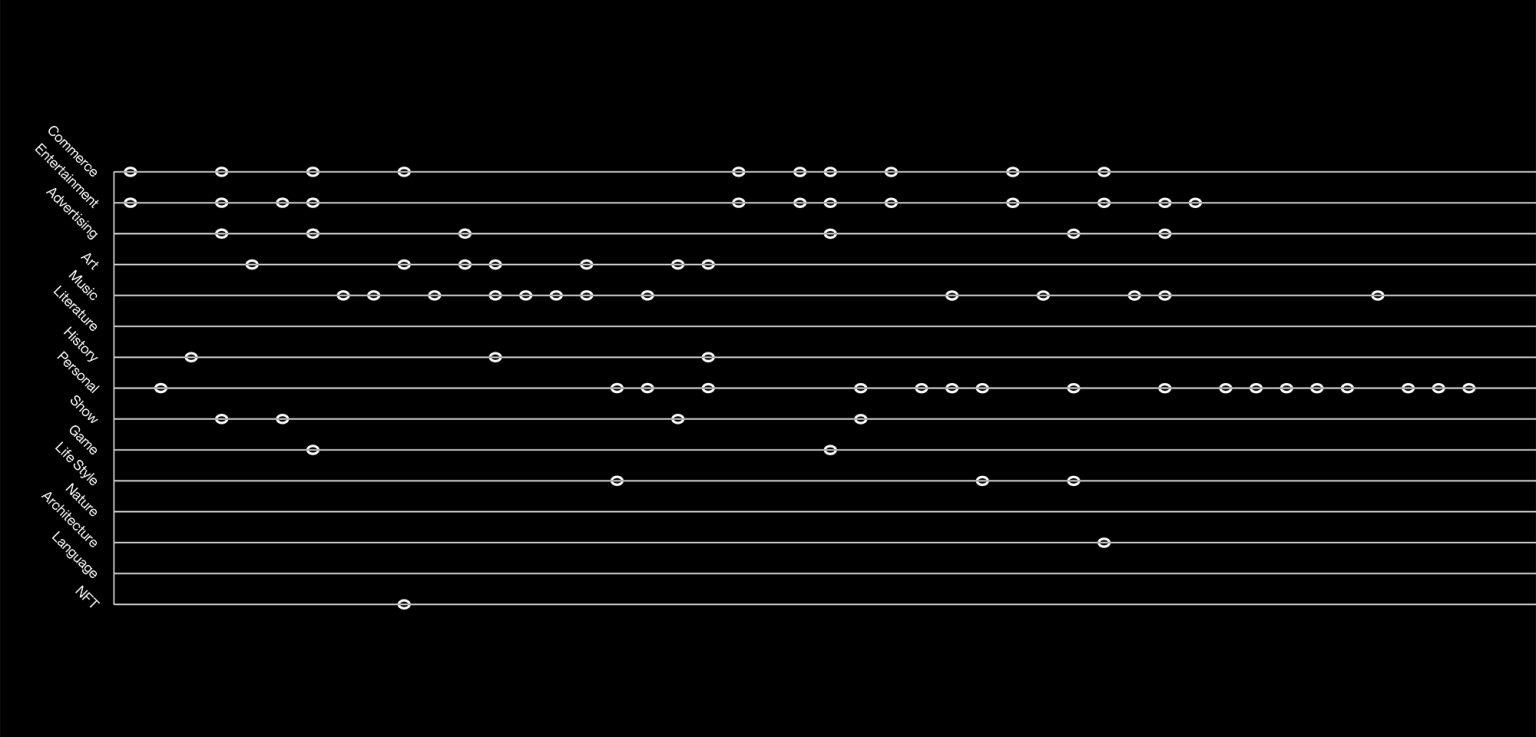To Scry: A Portal to Re-enchantment
Zixuan Zhang
In my thesis Design as Enchantment, Enchantment as Design, I examined how tools, artifacts, symbols, language, rituals, and storytelling serve in the process of communicating beliefs and providing enchantment.
I focused on the confrontation between old beliefs and modern civilization, as well as new possibilities for re-enchantment in the contemporary context. By borrowing methodologies from old beliefs, I developed my own approach of using experimental typography as a portal to a re-enchantment world.
I focused on the confrontation between old beliefs and modern civilization, as well as new possibilities for re-enchantment in the contemporary context. By borrowing methodologies from old beliefs, I developed my own approach of using experimental typography as a portal to a re-enchantment world.
Links
My link A Project website
Artist Statement
Zixuan Zhang is a cross-disciplinary visual artist born in China. By integrating language, material experimentation, typography and ritual design, her artistic practice is dedicated to questioning the void and fear associated with modernity, observing the transformation of belief systems in the contemporary context, and evoking reflection on the divinity and materiality of human beings. During the two years of MFA candidacy at Pratt Institute, she developed her own approach of using experimental typography as a portal to a re-enchanted world.
Part 1 Participatory Design (Interview)
While searching for the container to hold such a collective imagination, I stumbled upon the Hanging Garden of Babylon—the only one of the seven wonders of the ancient world that was believed to exist but has no archeological evidence. Following our ancestors’ tradition, I sat with my participants and related the stories of the Hanging Garden and asked them to draw from their imagination. I also asked them about their feelings of seeing the scene as well as how they would like to interact with the place.
Part 2 Type Design
Considering that this project is a celebration of collective imagination sparked by storytelling, here were my restrictions for the type design:
1. Good for displaying in 3D space—each sentence can be a structure of this "architecture";
2. Resembles hand-written features—to express the emotions embedded in the nature of storytelling;
3. Looks like threads or curvy wires— to express the unraveling of a story with interconnected letters. I imagined the face to be made of bent wires, both strong and supple, to form the structure for a building.
I made two versions of different slopes because for some parts of the 3D model I want it to be less slanted.
1. Good for displaying in 3D space—each sentence can be a structure of this "architecture";
2. Resembles hand-written features—to express the emotions embedded in the nature of storytelling;
3. Looks like threads or curvy wires— to express the unraveling of a story with interconnected letters. I imagined the face to be made of bent wires, both strong and supple, to form the structure for a building.
I made two versions of different slopes because for some parts of the 3D model I want it to be less slanted.
Part 3 3D Space Design – A Text Architecture
I combine some features in participants’ drawings, like pillars, platforms, supporting structures, pavilions, etc. to create a 3D model. Then I replace all the lines in this model with text in the font ToScry. The texts are their descriptions of emotions they feel for their imagination.
Part 4 Info-sonification: Sound Design Using Social Media Data
I collected around 200 posts that mention “hanging garden” on Twitter in a month. According to the order presented by Twitter’s algorithms, each post becomes one beat in the whole soundtrack. I sorted them into 14 categories, including commercial, art, music, history, entertainment, game, show, etc.
Part 5 Animation and music video
Searching and Morphing
See below
See below
01 Brochure of Collective Imagination
I collected people’s imagined drawings of the mythical architecture, the Hanging Garden of Babylon, by sitting with them and reciting the story as they drew with pencil and paper that I provided.
Searching
In this video, some words representing emotions or movement are found in this text architecture by searching.
Morphing
A music video using the sound design mentioned above. The shape of the text architecture constantly morphs, showing how our imagination is influenced by media.








